What is the actual day of the Jubilee 2022? Date of Queen’s Platinum Jubilee - and when was the Coronation
and live on Freeview channel 276
Soon, Queen Elizabeth II will publicly celebrate her Platinum Jubilee, officially marking 70 years on the throne - becoming the first ever British monarch to do so.
However, those among us with a knowledge of history or the royals may be left somewhat confused as to why the celebrations are being held in June and not when the Queen originally began her reign in 1952.
Advertisement
Hide AdAdvertisement
Hide AdThis is what you need to know about the Queen’s Platinum Jubilee and why it’s being held in June.
When is the actual day of the Queen’s Platinum Jubilee?
It may come as a surprise to some, but the Queen has actually already surpassed her Platinum Jubilee - she did so back in February.
Queen Elizabeth II officially started her reign on 6 February 1952 to be exact which this year fell on a Sunday.
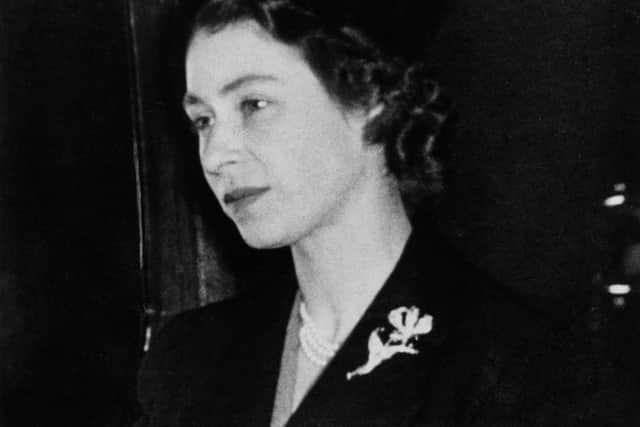

She was 25 years old when she acceded to the throne, following the death of her father, King George VI.
Advertisement
Hide AdAdvertisement
Hide AdThe King’s death came after a prolonged period of illness and, in the Royal Estate at Sandringham, he passed away in his sleep.
The Queen was actually in Kenya at the time of her fathers passing and subsequently became the first Sovereign to accede whilst abroad in over 200 years.
Why is it being marked in June?
The reason that the Queen’s Platinum Jubilee is celebrated in June, the same with her other Jubilee’s that she has celebrated over her 70 year reign, is because the Queen, understandably, does not wish to celebrate the milestone on a date which also shares her father’s death.
The first week of June was selected because the date offers a better chance of good weather which, for outdoor events like Trooping the Colour, the lighting of the Jubilee Beacons, Platinum Party at the Palace and Big Jubilee Lunches taking place up and down the country, proves essential.
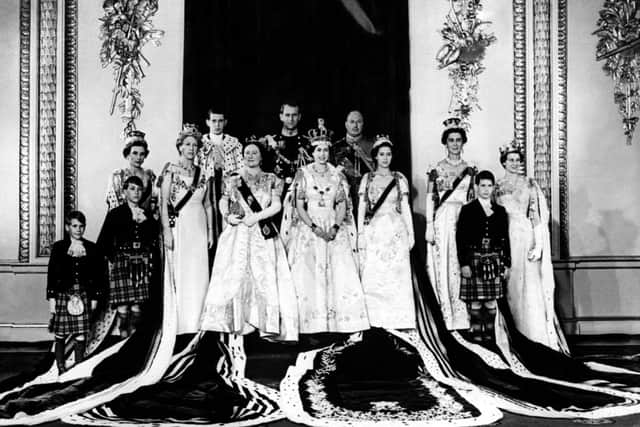

Advertisement
Hide AdAdvertisement
Hide AdHosting celebrations in June instead also coincides with when the Queen was crowned. Coronation Day was 2 June 1953, which was almost 18 months after she already became Queen, to allow for a period of mourning to pass.
The Royal Family explains: “The Coronation of the new Sovereign follows some months after his or her accession, following a period of mourning and as a result of the enormous amount of preparation required to organise the ceremony.”
What’s planned for the Platinum Jubilee?
A huge host of events have been planned to celebrate the Queen’s Platinum Jubilee, including an extra bank holiday.
The May Day bank holiday weekend will be shifted to Thursday 2 June, with an additional bank holiday on Friday 3 June to introduce a four day weekend in order to celebrate the Platinum Jubilee.
Advertisement
Hide AdAdvertisement
Hide AdOn Thursday 2 June, the Queen’s birthday parade, also known as Trooping the Colour, will be held, with over 1,400 parading soldiers, 200 horses and 400 musicians coming together in the traditional parade to mark the Queen’s official birthday.
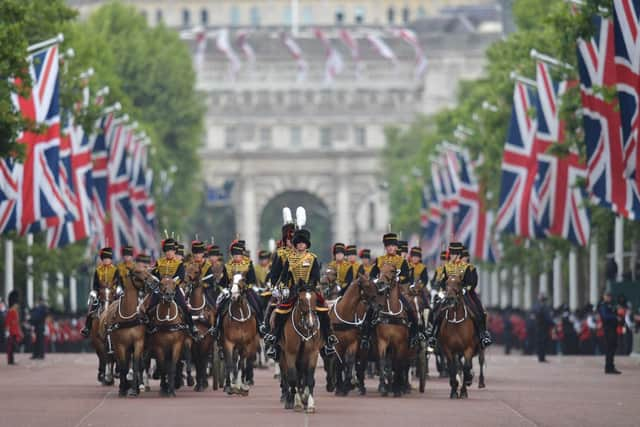

Also on the Thursday, over 1,500 beacons will be lit throughout the UK, Channel Islands, Isle of Man and UK Overseas Territories, as is tradition to mark events like Royal Jubilees, weddings and Coronations.
On Friday a service of Thanksgiving for the Queen’s reign will be held at St Paul’s Cathedral.
On Saturday 4 June, the Queen will attend the Derby at Epsom Downs, alongside members of the royal family. The BBC will also broadcast the Platinum Party at the Palace which will see some of the biggest names in the world of entertainment come together to celebrate the Queen’s seven decades on the throne.
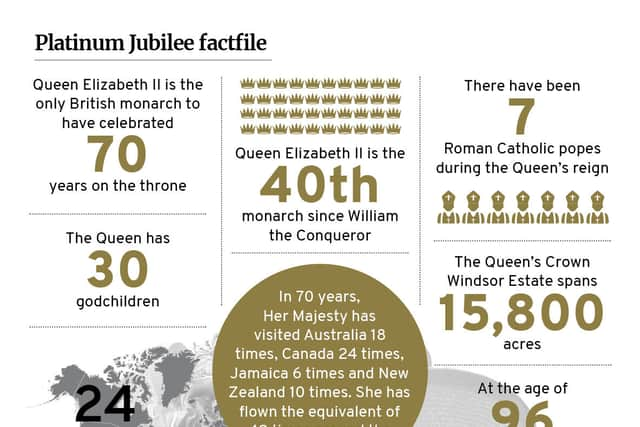

Advertisement
Hide AdAdvertisement
Hide AdFinally, on Sunday 5 June, members of the public are encouraged to take part in The Big Jubilee Lunch, where communities celebrate their connections and get to know each other a bit better, in the spirit of fun and friendship.
Also taking place on Sunday 5 June to wrap up the Platinum Jubilee celebrations is the Platinum Jubilee Pageant.
A pageant of over 5,000 people from across the UK and the Commonwealth will take place against the backdrop of Buckingham Palace, and the surrounding streets.
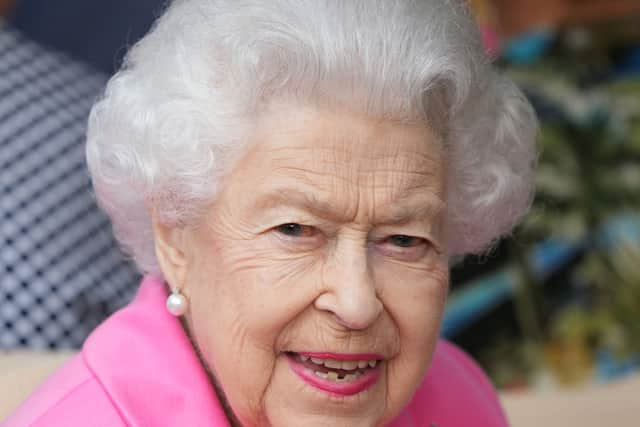

It will feature street arts, theatre, music, circus, carnival and costume, and celebrate the service of the Queen’s reign, as well as honouring the collective service of people and communities across the country.
Comment Guidelines
National World encourages reader discussion on our stories. User feedback, insights and back-and-forth exchanges add a rich layer of context to reporting. Please review our Community Guidelines before commenting.
